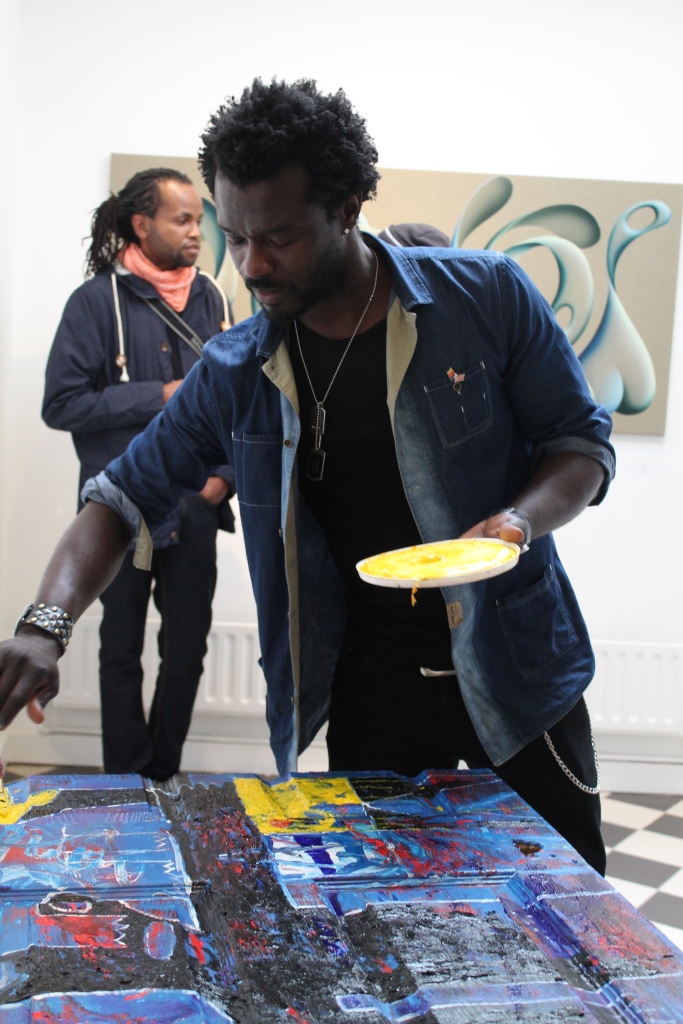
Arts Editor Ruth Waters caught up with leading Afro-surreal expressionist painter, Adjani Okpu-Egbe, between his Coldharbour Lane studio and his Atlantic Road exhibition.
Growing up in Cameroon, Adjani dreamed of playing for the national football team. He was selected for the junior national team at fourteen but his businessman father was determined he would study mathematics and follow him into business. Locked in his bedroom for hours on end supposedly doing sums, Adjani began drawing footballers from memory, hurriedly scrawling mathematical sums over the top when his father came to check on him.
The combination of mathematical symbols and expressive drawings remains a defining feature of Adjani’s work. His paintings are a complex lattice of modern and ancient mathematical and linguistic symbols, alongside bold and abstracted figures in raw colours. “It’s unbelievable the way certain things have worked together in my life, leading me to paint in this way.”
At high school it wasn’t just his drawing skills that got him noticed. An enthusiastic sportsman and a highly commended team player, Adjani thought of being a politician and studied archaeology and history at university. Worried how he would earn a living in Cameroon, Adjani then decided to enroll in the British Army and served for five years, before being discharged due to health problems last year.
It was only while he was on sick leave from the army that Adjani returned to the drawing and painting from his childhood. “Most of the time that I was drawing, I noticed that I was at peace. I stopped taking my prescribed antidepressants – they didn’t work for me – and I used my art as therapy. I did a couple of drawings which many people seemed to really like, and I just took it from there.”
“In the beginning, I wasn’t expecting to be showing my work to anybody. The reason for drawing and painting today is still the same as it was then: therapy. To start with I refused to sell or give any of my pieces away because they were so personal.”
Having only been a dedicated artist since September 2012, Adjani has packed a lot in already, exhibiting in London, LA and New York. Last summer, Adjani was selected by the BBC to be one of 20 artists commissioned to capture the Queen’s Diamond Jubilee river pageant from the Millennium Bridge, and he has recently returned from presenting a print of the final pageant-inspired piece to be hung in the British Embassy in Cameroon. He is also the first person to be given permission to exhibit at the Dalton Barracks in Abingdon, Oxfordshire.
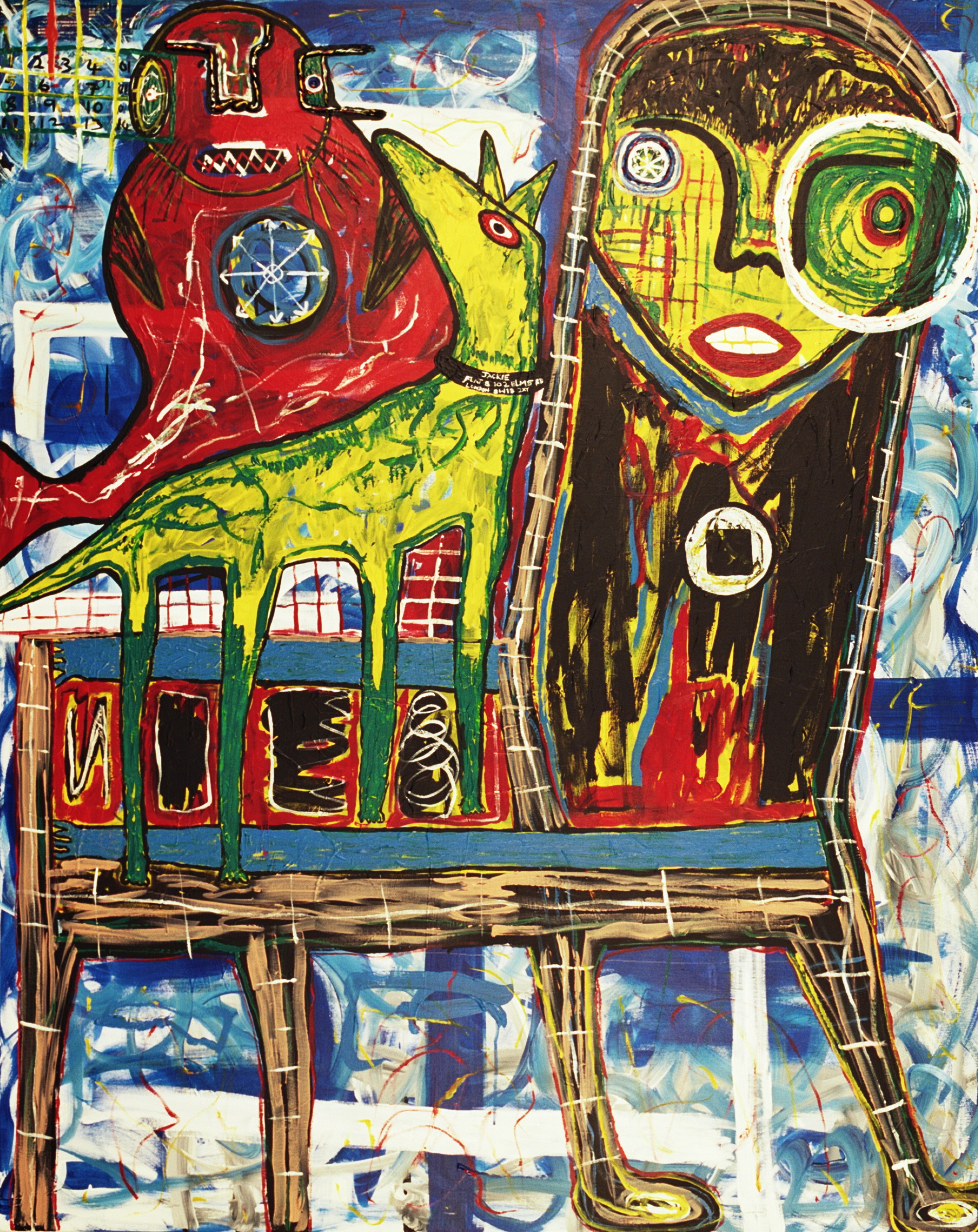
He tells me about his surreal journey from leaving Cameroon to returning there as an honorary artist: “When I was in Cameroon earlier this year, I was standing as an invited guest, expenses paid, in the exact same spot as I stood almost seven years ago, applying for a visa to live in the UK.”
Adjani had his first solo exhibition last year at Mokspace Gallery opposite the British Museum, and will be returning there later this year, after he exhibits in South Kensington and, of course, Brixton’s Knight Webb Gallery. Where does he find inspiration for this constant outpouring of creativity? “I’m really interested in ancient African and Western myths and symbols,” he tells me, “and I read a lot, and try to research everything that interests me.” But it is his interest in contemporary life, interlaced with the mystical, ancient and symbolic, which gives his work universal appeal. “I can just jump on the bus for whole days at a time. I love watching people, and come back with a whole sketch pad full of ideas and drawings.”
Inspired by two greats of expressionism, Jean-Michel Basquiat and Pablo Picasso, Adjani’s work has a unique blend of influences and guiding principles. “I stand in a more privileged position than either of them. Although Basquiat had an African heritage, he never actually lived in Africa, and Picasso was only an interested outsider; I lived and studied there, so expressing Africa comes naturally to me and I get to tap into their mastery of expressionism with my own ideas and images.”
Much like his career path, Adjani and his Brixton studio were united by a remarkable series of events. While in the area working with a group of young people on graffiti art, he went into the ‘D’ Convenience Store on Coldharbour Lane to find the man serving him to be not only from Cameroon, but from the very same village as him. The two instantly bonded, and Adjani now paints from a makeshift studio at the back of the shop.
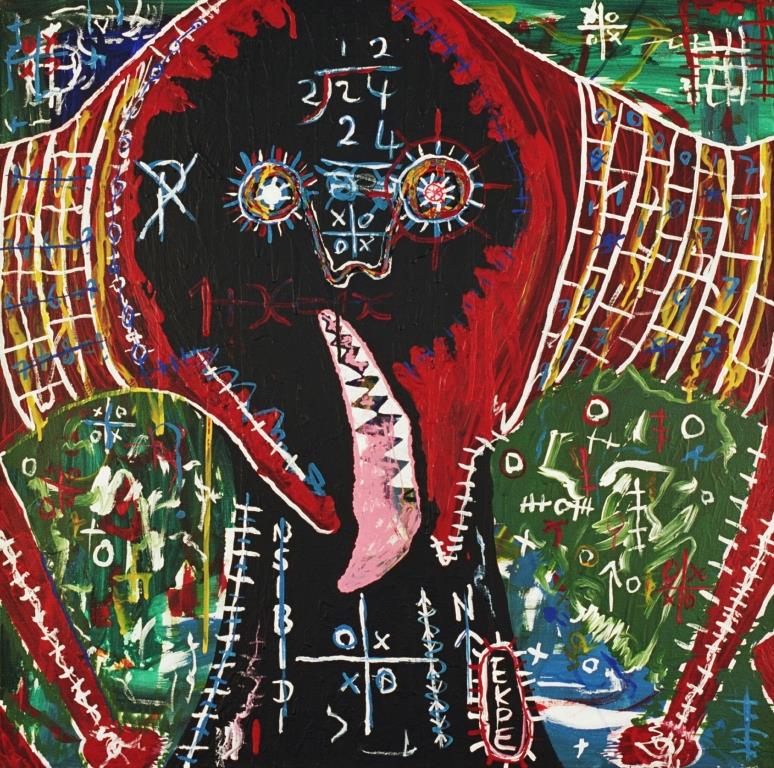
Adjani is regularly invited to paint live at events, with the Diamond Jubilee pageant being the most notable event he has painted at. He also painted at the Jarvits Center New York last year. Why does he think he is constantly invited to paint live? “People are fascinated by the creation of art. I love to remove all the barriers of painting. I get passers-by participating, and give them the brush. It’s fantastic.”
However, one of these events landed Adjani in the cells. Whilst out painting around Clapham Junction during the August 2011 riots he was mistakenly arrested and accused of looting a t-shirt. Never easily defeated, Adjani views this personal injustice and the riots as a whole through an artist’s eyes. “To my mind, the riots were expressionism but performed on the wrong platform. These youngsters have something to say, but they’re saying it in the wrong way”.
Not satisfied with the soaring success of his paintings, which now sell for thousands of pounds and attract large audiences to both group and solo shows, Adjani tells me that “I will consider myself doing well when I can show young people how to express themselves through art and use it as therapy.”
Adjani’s work is currently part of Urban Expressionism and other Stray Talent at Knight Webb Gallery on Atlantic Road.

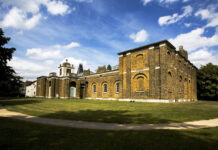
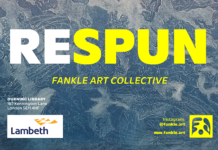
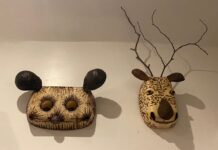
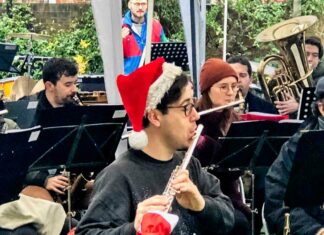




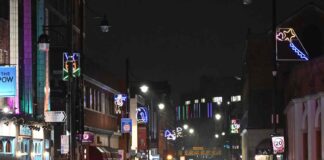





[…] painter Adjani Okpu-Egbe will be opening Underdogs, a solo exhibition at Bloomsbury’s renowned centre for international […]